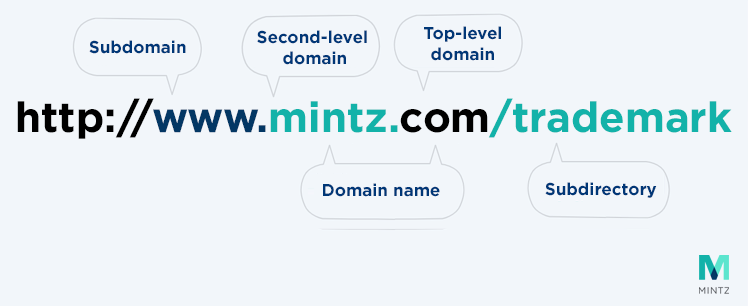Unauthorized use of a trademark on the Internet occurs often and in many forms, usually involving the profiting, whether intentionally or unintentionally, from the goodwill associated with a trademark belonging to someone else. Such use, however, does not always rise to the level of trademark infringement. Unauthorized use of a trademark is only infringing if the particular use causes likely confusion among consumers. The most common type of confusion is confusion over source, which occurs at the time of purchase, but confusion can also arise as to affiliation, connection, or sponsorship, and confusion does not necessarily need to occur at the time of purchase.
Infringement can also be based on confusion that creates initial customer interest, even if the confusion is dispelled by the time of purchase. This so-called initial interest confusion is a doctrine under trademark law that is designed to address unauthorized use of a trademark in a manner that captures consumer attention, even though no sale is ultimately completed as a result of any initial confusion, and courts have found the doctrine particularly applicable to the Internet. Examples of unauthorized online trademark use that may constitute infringement include cybersquatting; trademarks in ad copy, keywords, hashtags, and metatags; and fake usernames on social media platforms.
Cybersquatting
To better understand the different types of cybersquatting, it is important to define the various parts of a web address:

Cybersquatting comes in four distinct types: domain squatting, combo squatting, typo squatting, and doppelganger domains. Domain squatting is the registration of new domain names that are identical or confusingly similar to a company’s existing trademarks. Combo squatting is the registration of new domain names created by adding words to already registered domain names. Typo squatting is the registration of new domain names with transposed letters or common misspellings of already registered domain names. Lastly, a doppelganger domain is the registration of a new domain name that omits the dot between the subdomain and the second-level domain. Apart from the domain name itself, there is debate as to whether trademark use within a subdirectory also violates trademark law, with some courts holding that a consumer viewing the subdirectory of a URL would likely experience initial interest confusion, while other courts have held that the appearance of another company’s trademark in the subdirectory does not imply sponsorship or endorsement.
Cybersquatting can also involve domain name parking, which occurs when a domain name registrant deposits its domain names with a registrar or parking service provider, who then creates placeholder pages and invites Internet ad networks to fill them with ads as opposed to constructing a functional website. This then generates money for the registrant when Internet surfers click on links to other websites advertised on the parked page.
Unauthorized Use of Trademarks in Online Advertising and Social Media
Online infringement also occurs through the unauthorized use of trademarks in ad copy, keywords, hashtags, and as fake usernames on social media platforms. In the early days of the Internet, this type of infringement also occurred with metatags, which are lists of words used by search engines to index and identify the content of a website. But modern search engine algorithms no longer rely on metatags and courts have recognized that metatags are outdated in regard to search engine indexing.
Google, Facebook, and Twitter together comprise more than half of the U.S. digital ad market and are a natural focus for any company’s enforcement efforts. Each company has trademark policies prohibiting trademark infringement and provide various mechanisms for companies to report potential trademark violations. Google and Twitter also offer keywords for use in conjunction with their online ads and courts have held that keyword advertising combined with trademark usage in other contexts, such as domain names or advertisement text or placement, can cause a likelihood of confusion. Facebook and Twitter can also be used for the unauthorized registration of usernames or account names that comprise or include a company’s brand, a practice known as brandjacking. These unauthorized usernames can then be used to distribute false information about a company, redirect the public to other companies or products, obtain confidential information, or simply prevent the brand owner from using them as their logical account names for marketing purposes.
Hashtags are widely used on social media platforms to identify or facilitate a search for a keyword or promote goods and services. But whether using another’s trademark along with a hashtag can create a likelihood of confusion and constitute trademark infringement is an open question and case law to date has been contradictory.
Responding to Online Trademark Infringement
There are a variety of options for addressing online infringement. When the infringement involves domain names, companies can use statutes such as the Anti-Cybersquatting Consumer Protection Act or alternative dispute resolution like ICANN’s Uniform Domain Name Dispute Resolution Policy. When the infringement involves online advertisements or unauthorized trademark use on social media, the trademark policies of the respective platforms can be used to report any alleged trademark violations. Lastly, there is always the option to file suit in federal court for trademark infringement. The particular enforcement approach taken should be informed by the facts at hand and the strengths and weaknesses of the various enforcement mechanisms. One drawback to the Anti-Cybersquatting Consumer Protection Act is that it does not prevent the fair use of trademarks or any use that is protected by the First Amendment. For example, criticism or gripe sites, also known as “sucks” sites because they are often in the form “brandXsucks.com”, are likely shielded by the First Amendment. But the Act can provide a starting point for trademark owners to combat domain name parking, such as in the case of parked typo squatted or combo squatted domain names.
For keyword-related infringement, trademark owners often must police the use of their own marks. Some companies even resort to buying their own brand terms as keywords, as a cost-effective strategy for preventing keyword-related trademark infringement. Unfortunately, competitors anticipate this reaction and sometimes use a search engine’s keyword bidding system to force a company to pay more than it normally would for keywords. For hashtag-related infringement, trademark owners should consider that if their trademarks are used as a hashtag and the use is non-commercial, then a court may consider the unauthorized use to be a fair use.
Allen Loayza contributed to this article.




 />i
/>i

